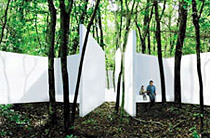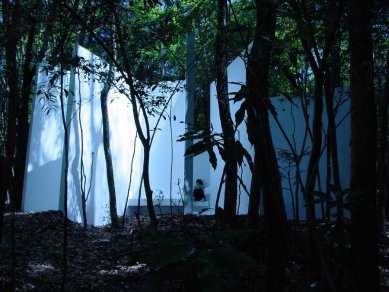
Forest Observatory

 |
As I stepped into the rainforest of the site for the first time, I instinctively started to mind my step and listen to the sounds around me: strange birds in the trees and animals moving in the bushes. The visibility was limited to few metres around me and things taking place further away could only be heard. The mist floating in the forest only intensified this acoustic experience. I stayed in one place for a long time and it started to feel that if I waited patiently and quietly the sources of the sounds might slowly emerge and reveal themselves.
The observation station I designed is a simple spatial instrument that helps visitors listen to and sense the surrounding nature more keenly. The walls surrounding the pavilion catch sounds from different directions while the courtyard is a more protected space acoustically for meetings and conversation.
The walls and benches are made of 5-cm-thick, white in-situ concrete, painted and coated for weather resistance. A paved path, surfaced with white gravel, leads to the courtyard.
Concrete was pumped into the wooden shuttering through the forest using a 70-metre-long hose. The workmanship is outstanding: the surface of the concrete resembles paper and the edges are crisp. This reinforces the impression of the abstract, immaterial nature of the walls in contrast to the lush vitality of the nature around it. Light, shade and natural forms play the leading role.
The whole idea of the work is based on the saying that sometimes a whisper is a more efficient way to be heard than shouting.
Sami Rintala
0 comments
add comment

















